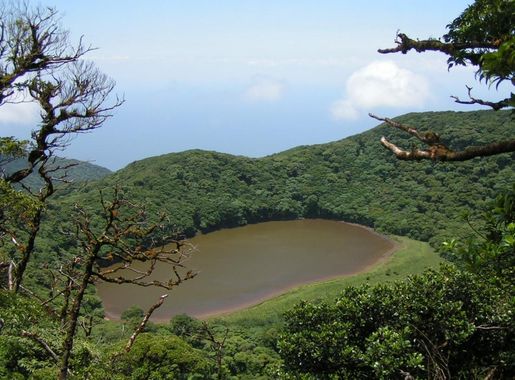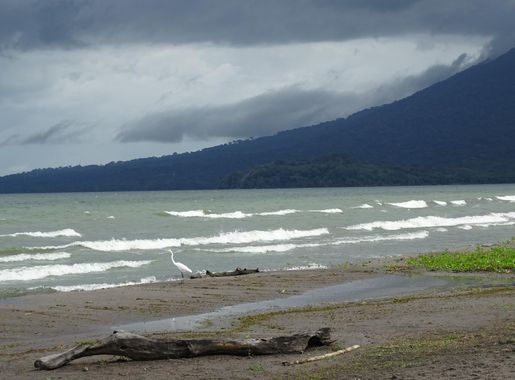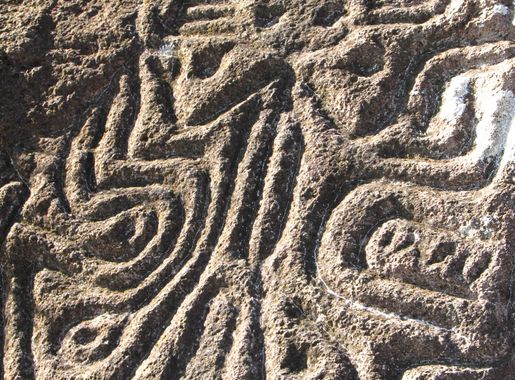
Ometepe: The Twin Volcano Island Paradise
Discover Ometepe: An island paradise in Lake Nicaragua with twin volcanoes, pristine beaches, rich history, and diverse wildlife, offering a unique travel experience.
Ometepe, an island located in Lake Nicaragua, is a must-visit destination for those seeking adventure and natural beauty. Formed by two volcanoes, Concepción and Maderas, the island offers breathtaking landscapes, rich biodiversity, and a unique cultural experience. Whether you're a nature enthusiast, a history buff, or simply looking to unwind, Ometepe has something for everyone. The island's two volcanoes offer contrasting experiences. Concepción, an active volcano, is perfect for those seeking a challenging hike with rewarding views from the summit. Maderas, on the other hand, is dormant and covered in a mystical cloud forest, making it ideal for a less strenuous trek. At the top, you'll find a crater lake that's perfect for a refreshing dip. Ometepe is not just about volcanoes. The island is home to several pristine beaches, perfect for relaxing and soaking up the sun. Playa Santo Domingo is one of the most popular, offering stunning views and crystal-clear waters. For a more secluded experience, head to Punta Jesús María, a narrow strip of land that stretches into the lake, providing panoramic views and a tranquil atmosphere. The island also boasts a rich cultural heritage. Visit the pre-Columbian petroglyphs scattered around the island to get a glimpse of its ancient history. The El Ceibo Museum offers an extensive collection of artifacts that tell the story of Ometepe's past. Don't forget to explore the local markets and try some traditional Nicaraguan dishes, such as gallo pinto and nacatamales. For those interested in wildlife, Ometepe is a haven for birdwatchers and animal lovers. The Charco Verde Nature Reserve is a great spot to see a variety of bird species, monkeys, and butterflies. The island's diverse ecosystems, from tropical dry forests to wetlands, provide ample opportunities for eco-tourism and nature exploration.
Local tips in Ometepe
- Bring sturdy hiking shoes for volcano treks.
- Carry cash, as ATMs are limited on the island.
- Rent a scooter or bike to explore the island more freely.
- Visit local markets early in the morning for the freshest produce.
- Check the weather forecast before planning hikes, especially for Concepción.
Ometepe: The Twin Volcano Island Paradise
Ometepe, an island located in Lake Nicaragua, is a must-visit destination for those seeking adventure and natural beauty. Formed by two volcanoes, Concepción and Maderas, the island offers breathtaking landscapes, rich biodiversity, and a unique cultural experience. Whether you're a nature enthusiast, a history buff, or simply looking to unwind, Ometepe has something for everyone. The island's two volcanoes offer contrasting experiences. Concepción, an active volcano, is perfect for those seeking a challenging hike with rewarding views from the summit. Maderas, on the other hand, is dormant and covered in a mystical cloud forest, making it ideal for a less strenuous trek. At the top, you'll find a crater lake that's perfect for a refreshing dip. Ometepe is not just about volcanoes. The island is home to several pristine beaches, perfect for relaxing and soaking up the sun. Playa Santo Domingo is one of the most popular, offering stunning views and crystal-clear waters. For a more secluded experience, head to Punta Jesús María, a narrow strip of land that stretches into the lake, providing panoramic views and a tranquil atmosphere. The island also boasts a rich cultural heritage. Visit the pre-Columbian petroglyphs scattered around the island to get a glimpse of its ancient history. The El Ceibo Museum offers an extensive collection of artifacts that tell the story of Ometepe's past. Don't forget to explore the local markets and try some traditional Nicaraguan dishes, such as gallo pinto and nacatamales. For those interested in wildlife, Ometepe is a haven for birdwatchers and animal lovers. The Charco Verde Nature Reserve is a great spot to see a variety of bird species, monkeys, and butterflies. The island's diverse ecosystems, from tropical dry forests to wetlands, provide ample opportunities for eco-tourism and nature exploration.
When is the best time to go to Ometepe?
Iconic landmarks you can’t miss
Mirador de Catarina
Discover the stunning views of Lake Nicaragua and Mombacho Volcano at the Mirador de Catarina, a serene escape into Nicaragua's natural beauty.
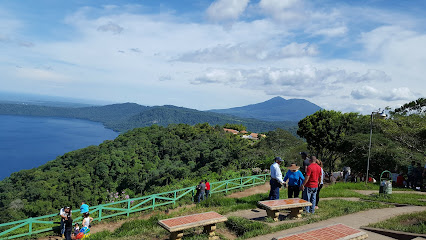
Reserva Natural Ojo de Agua
Experience the tranquil beauty and adventure at Reserva Natural Ojo de Agua, a serene retreat in Tilgüce with crystal-clear waters and lush surroundings.
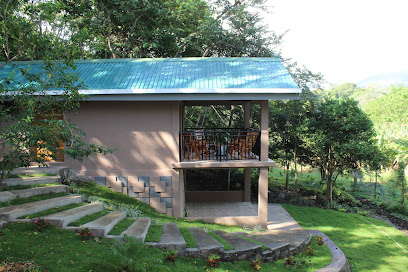
Cristo de La Misericordia
Experience breathtaking views and rich culture at Cristo de La Misericordia, the iconic statue overlooking San Juan del Sur, Nicaragua.
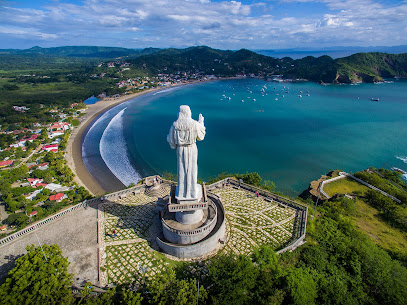
Reserva Natural Volcán Mombacho
Discover the breathtaking landscapes and rich biodiversity at Reserva Natural Volcán Mombacho, a must-visit nature preserve near Granada, Nicaragua.
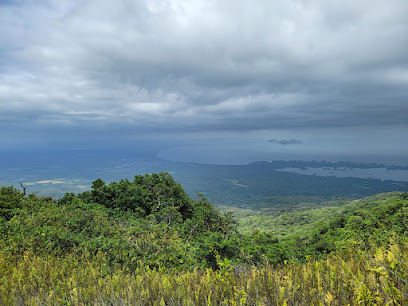
Granada Malecon
Experience the breathtaking beauty and vibrant culture of Granada Malecon, a stunning waterfront park along Lake Nicaragua.
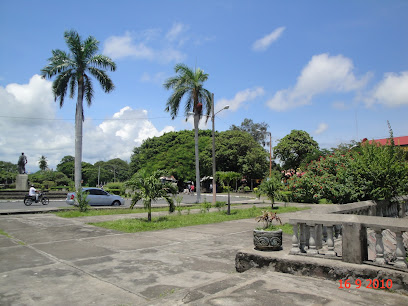
Xalteva Park
Discover the beauty of Xalteva Park, a historic green space in Granada, Nicaragua, perfect for relaxation and cultural exploration.
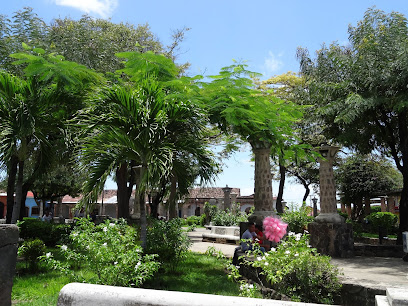
Mirador Calvary
Experience breathtaking views and serenity at Mirador Calvary, the ultimate scenic lookout in Matagalpa, Nicaragua.
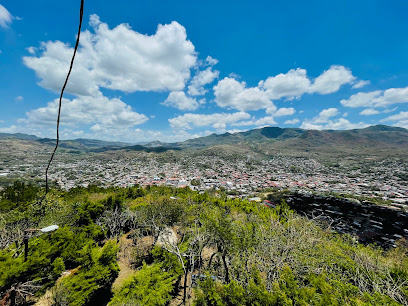
Playa Mangos kayaks & restaurant
Experience the best of Nicaragua at Playa Mangos, where kayaking adventures meet exquisite local dining in a stunning beachside setting.
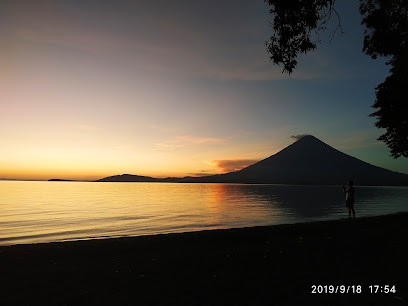
Immaculate Conception of Mary Cathedral Church
Explore the Immaculate Conception of Mary Cathedral in Granada, a stunning symbol of history and faith, capturing the heart of Nicaragua's culture.
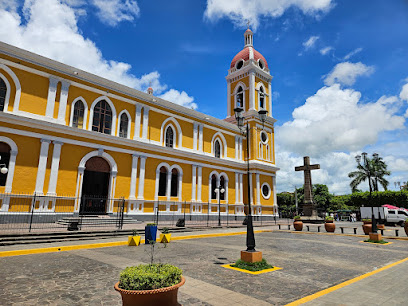
El Zopilote Permaculture Farm / Hostel / Restaurant / Pizzeria
Experience the beauty of Nicaragua at El Zopilote Permaculture Farm, where sustainability meets relaxation in a unique eco-friendly retreat.
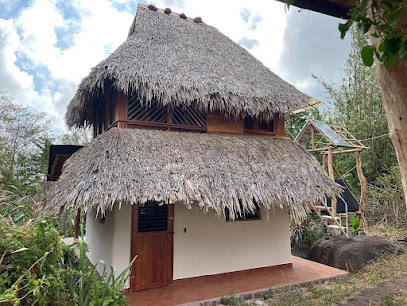
Hospedaje Soma
Discover the charm of Moyogalpa at Hospedaje Soma, a perfect blend of comfort, local cuisine, and adventure on Ometepe Island.
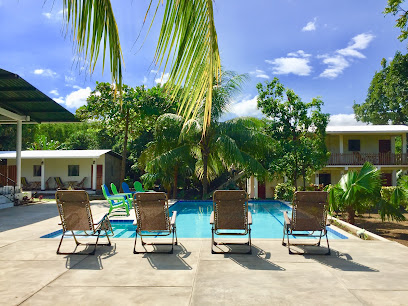
El Coyotepe Fortress
Explore El Coyotepe Fortress in Masaya, Nicaragua: A historical gem with breathtaking views and captivating stories waiting to be discovered.
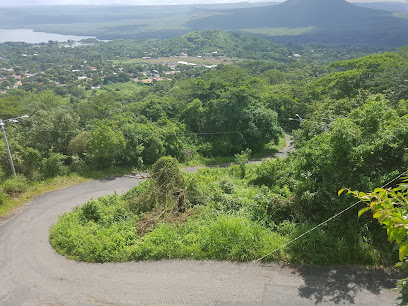
Chapel Maria Auxiladora
Discover the serenity and beauty of Chapel Maria Auxiladora, a stunning Catholic church and cultural treasure in the heart of Granada, Nicaragua.

Xalli, Ometepe Beach Hotel
Discover the tranquility of Xalli, Ometepe Beach Hotel, where stunning landscapes meet Nicaraguan hospitality for an unforgettable retreat.

Cascada de San Ramón
Discover the enchanting Cascada de San Ramón, a breathtaking waterfall in Las Cuchillas, Nicaragua, perfect for nature lovers and adventure seekers.
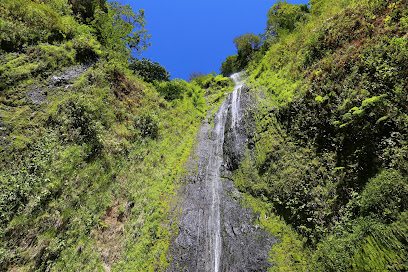
Unmissable attractions to see
Cristo de La Misericordia
Experience breathtaking views and spiritual serenity at Cristo de La Misericordia in San Juan del Sur, a must-visit tourist attraction.
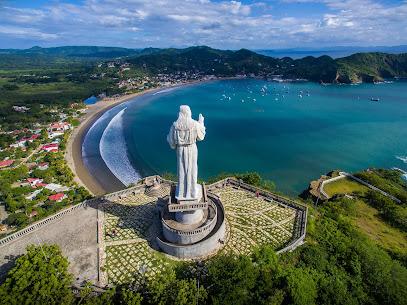
Ciudad de Rivas Central Park
Explore the natural beauty and cultural richness of Ciudad de Rivas Central Park, an urban oasis in the heart of Rivas, Nicaragua.
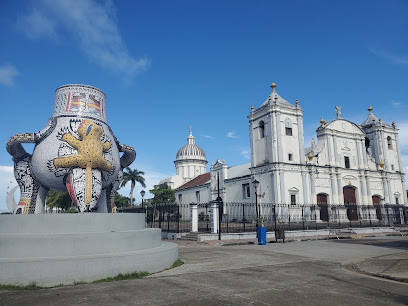
Playa San Juan del Sur
Discover the stunning beaches and vibrant culture of San Juan del Sur, Nicaragua's premier coastal destination for relaxation and adventure.

Playa Maderas
Discover the enchanting Playa Maderas in Nicaragua, where golden sands meet thrilling surf and breathtaking sunsets await.
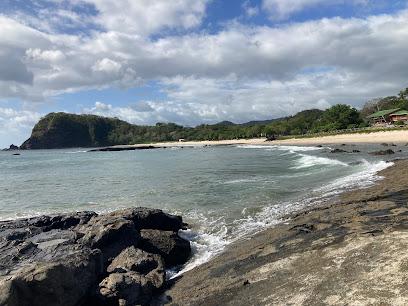
Cascada de San Ramón
Experience the breathtaking beauty of Cascada de San Ramón, a stunning waterfall in Nicaragua's lush landscapes, perfect for adventure and relaxation.
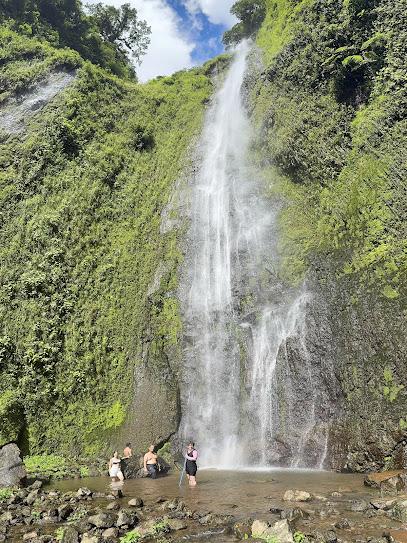
El Ceibo Museums
Discover the rich cultural heritage of Nicaragua at El Ceibo Museums, a unique blend of hotel and museum in Sacramento.

Aventura San Juan del Sur - Zipline Canopy Tour Park
Experience the thrill of ziplining at Aventura San Juan del Sur, where adventure meets the stunning beauty of Nicaragua's lush landscapes.
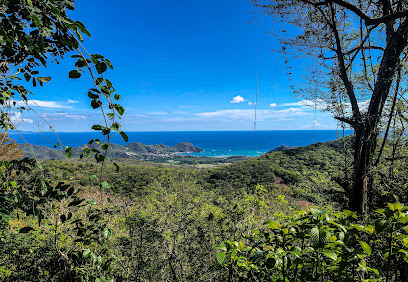
Charco Verde
Discover the serene beauty of Charco Verde, a tranquil lake in Nicaragua, perfect for nature lovers and those seeking relaxation in paradise.
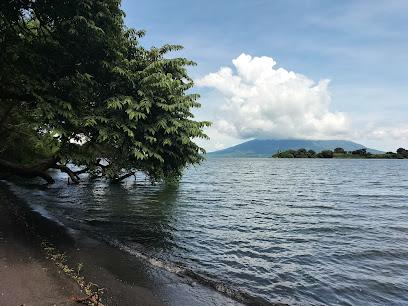
Maderas
Experience the stunning beauty and adventure of Maderas, a dormant volcano on Ometepe Island, Nicaragua, rich in biodiversity and breathtaking views.
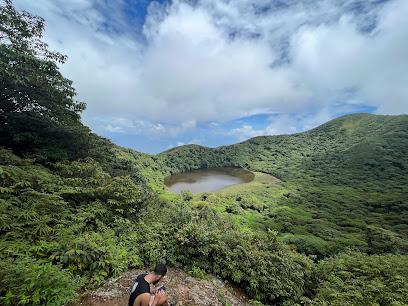
Totoco Eco-Lodge
Experience the harmony of nature and comfort at Totoco Eco-Lodge, your eco-friendly retreat in the heart of Nicaragua's breathtaking landscapes.
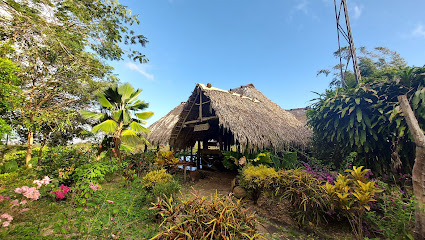
Museo Altagracia
Explore the cultural heritage of Nicaragua at Museo Altagracia, a captivating history museum in Altagracia showcasing local traditions and artifacts.
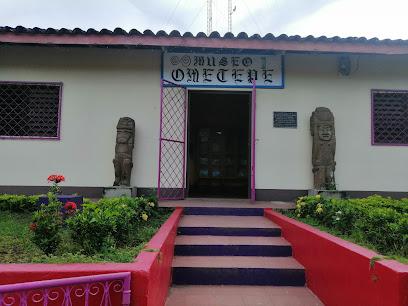
VISTA DEL CRISTO DE LA MISERICORDIA HACIA LA PLAYA DE SAN JUAN DEL SUR
Discover breathtaking views and serene surroundings at Vista del Cristo de la Misericordia, the ultimate observation deck in San Juan del Sur, Nicaragua.

Mirador del Volcan Concepción
Discover the stunning beauty of Mirador del Volcan Concepción on Ometepe, offering breathtaking views and a serene escape into nature's embrace.
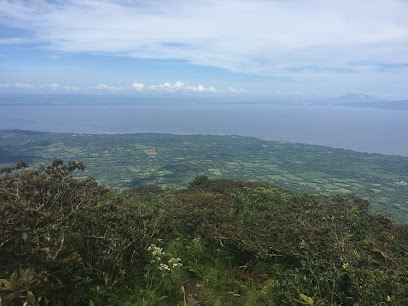
Nicaragua Butterfly Reserve
Discover the vibrant colors and serene beauty of the Nicaragua Butterfly Reserve, a must-visit destination for nature lovers and butterfly enthusiasts.
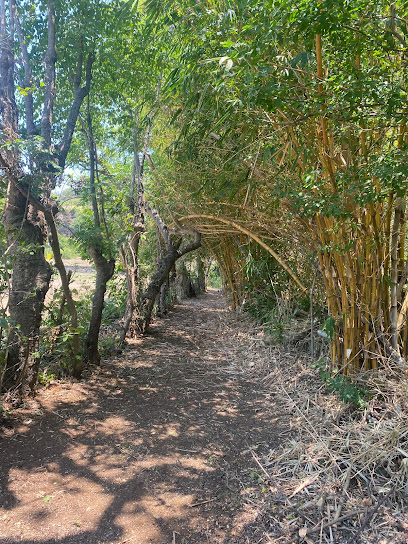
Bat Caves (cuevas de murciélagos)
Discover the Bat Caves of Nicaragua: A thrilling adventure into a breathtaking underground world filled with fascinating wildlife and stunning geological formations.
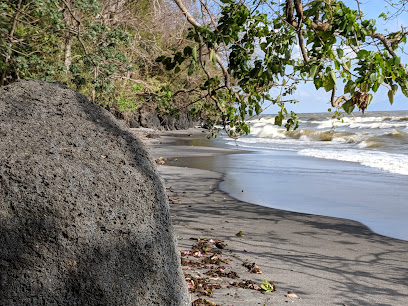
Essential places to dine
Café Campestre
Discover the vibrant flavors of Café Campestre on Isla de Ometepe—where local ingredients meet diverse culinary traditions.
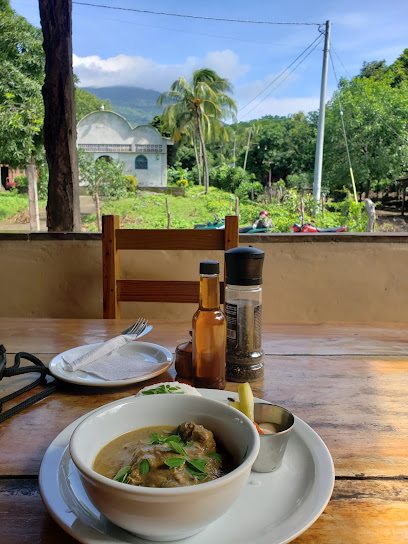
Playa Mangos kayaks & restaurant
Experience delightful local cuisine and thrilling kayaking at Playa Mangos - a perfect getaway in Mérida, Nicaragua.
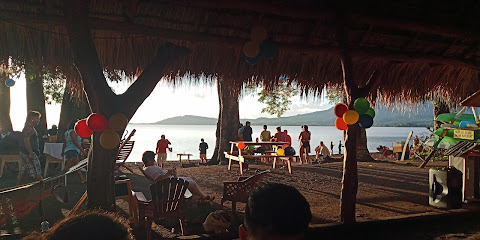
El Zopilote Permaculture Farm / Hostel / Restaurant / Pizzeria
Experience organic dining and eco-friendly living at El Zopilote Permaculture Farm - your ultimate retreat in Nicaragua's lush landscapes.
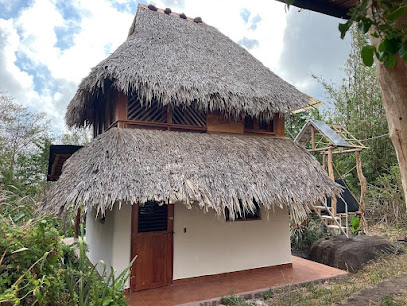
Los Ranchitos Ometepe
Discover the authentic flavors of Nicaragua at Los Ranchitos Ometepe, where delicious meals meet breathtaking views.
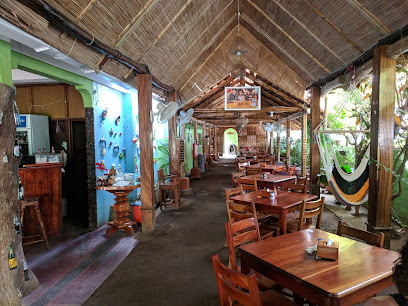
Charco Verde Hotel and Restaurant
Experience exquisite local flavors at Charco Verde Hotel and Restaurant on Isla De Ometepe amidst breathtaking natural beauty.
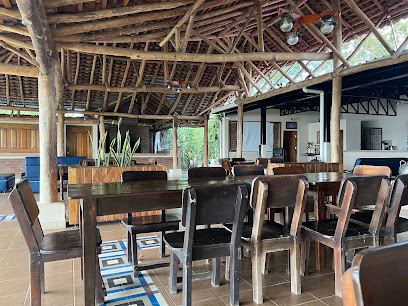
El Picante Mexican Restaurant
Experience authentic Mexican cuisine at El Picante in Moyogalpa – where vibrant flavors meet warm hospitality.
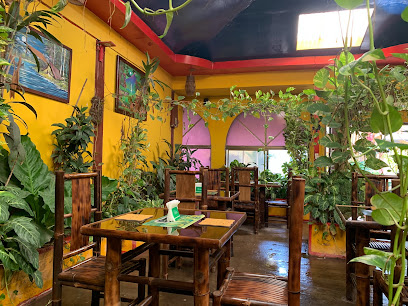
Pizzeria Mediterranea bar ristorante
Experience authentic Italian flavors at Pizzeria Mediterranea in El Madroñal - a culinary delight for pizza lovers and food enthusiasts alike.
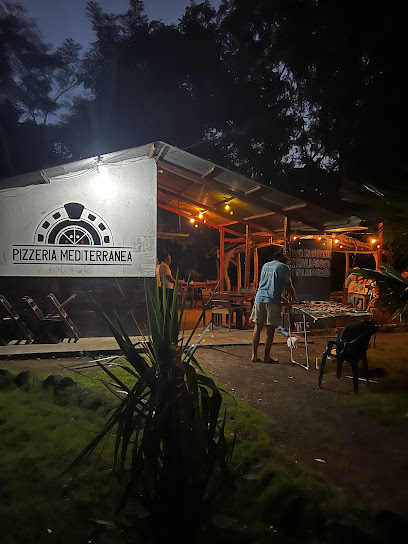
Soda Los Antojitos
Discover authentic Nicaraguan flavors at Soda Los Antojitos in Moyogalpa - where every meal tells a story.
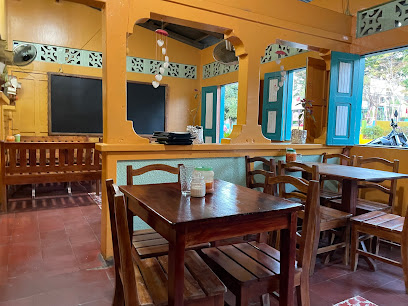
Comedor Mirador del Cocibolca
Experience authentic Nicaraguan flavors at Comedor Mirador del Cocibolca on Isla de Ometepe with stunning lake views.
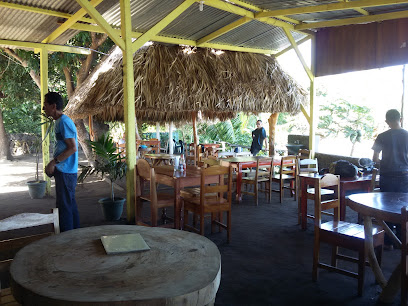
Playa El Perú Kayak Kencho
Explore tranquil shores at Playa El Perú Kayak Kencho – your gateway to adventure on Ometepe Island's stunning coast.
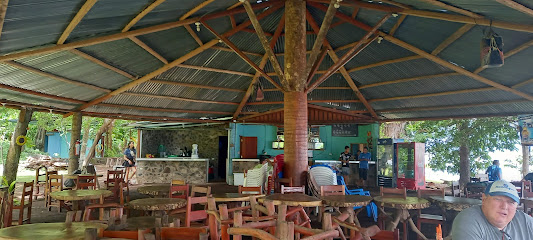
Mirador los Volcanes
Experience breathtaking views and authentic Nicaraguan cuisine at Mirador los Volcanes, where nature meets culinary delight.
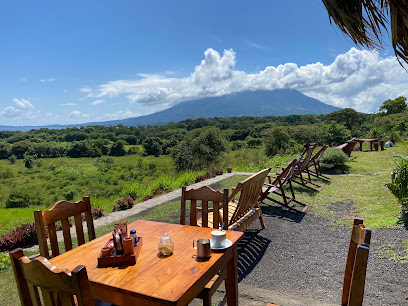
Rancho Morgan
Experience authentic Nicaraguan cuisine at Rancho Morgan in San José del Sur with stunning views and a welcoming atmosphere.
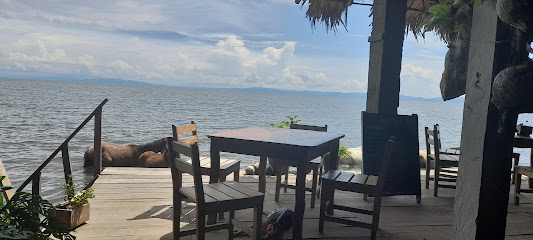
The Cornerhouse B&B Moyogalpa,ometepe
Discover tranquility and local charm at The Cornerhouse B&B in Moyogalpa, your gateway to exploring beautiful Ometepe Island.
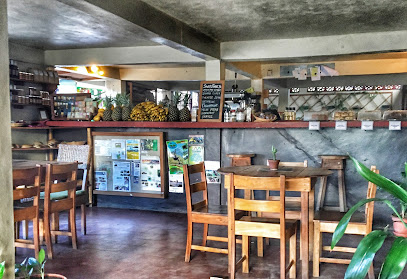
Bustavo Food Bus
Discover delicious Mediterranean cuisine at Bustavo Food Bus in Santa Cruz—home of flavorful falafel and more.
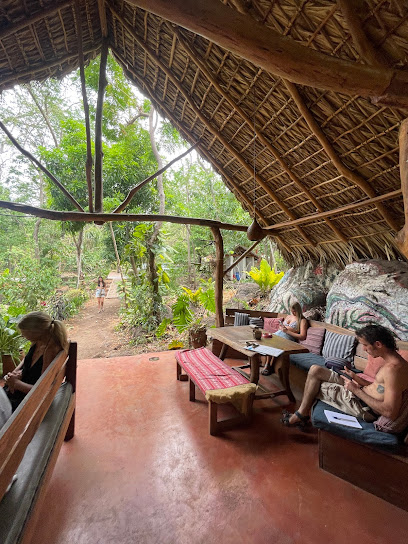
Isla Bonita
Experience family-friendly dining at Isla Bonita in Balgüe - savor authentic Nicaraguan cuisine in a warm and inviting atmosphere.
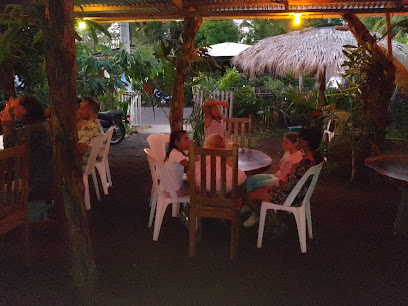
Markets, malls and hidden boutiques
Reserva Natural Ojo de Agua
Explore the serene landscapes and refreshing waters of Reserva Natural Ojo de Agua, a perfect retreat for nature lovers and adventure seekers in Nicaragua.
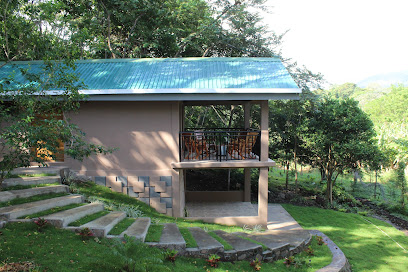
El Pital Ometepe, Chocolate Paradise
Explore the rich flavors of artisanal chocolate and experience holistic relaxation at El Pital Ometepe, your gateway to chocolate paradise.
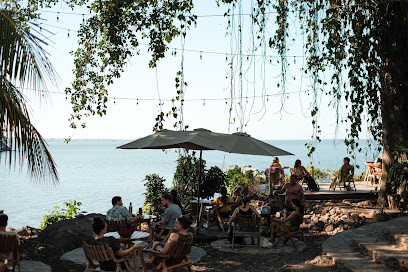
Café Campestre
Discover the flavors of Isla de Ometepe at Café Campestre, where delightful dishes meet a warm, inviting atmosphere.

ometepe kitesurf center
Explore the thrill of kitesurfing at Ometepe Kitesurf Center, where stunning landscapes and perfect wind conditions await water sports enthusiasts.
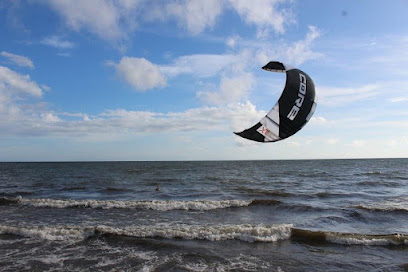
Hostel Life is Good
Discover the welcoming charm of Hostel Life is Good, your perfect base for exploring the stunning landscapes of Ometepe Island.

Totoco Eco-Lodge
Experience tranquility and sustainability at Totoco Eco-Lodge, your perfect escape into nature in beautiful Balgüe, Nicaragua.

Mega Ahorro
Explore the vibrant Mega Ahorro supermarket in Moyogalpa for local flavors and international products, perfect for all your travel needs.
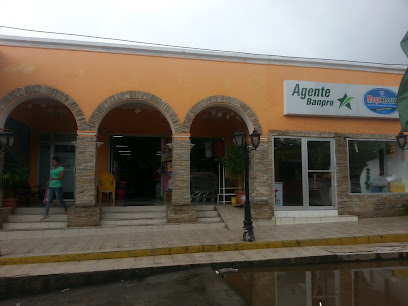
Ometepe Unique tours
Explore the natural beauty and cultural heritage of Ometepe Island with Ometepe Unique Tours, your gateway to unforgettable adventures.
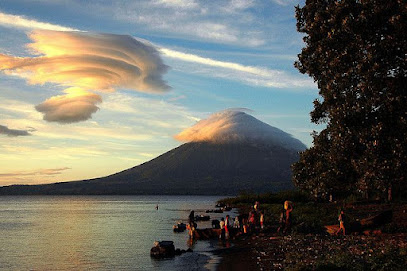
BUEN PRECIO #1
Explore local culture and unique finds at BUEN PRECIO #1, your shopping destination in Moyogalpa, Nicaragua.
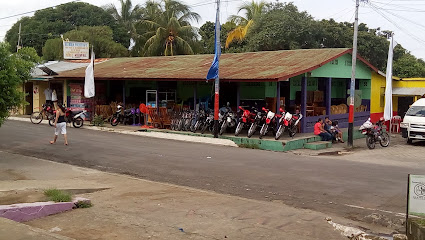
Rivas Store Online
Explore the finest selection of quality boots at Rivas Store Online, San Jorge's premier destination for stylish footwear.

Grafika
Discover the vibrant world of custom printing at Grafika in Isla de Ometepe, where your creative ideas come to life on unique apparel.
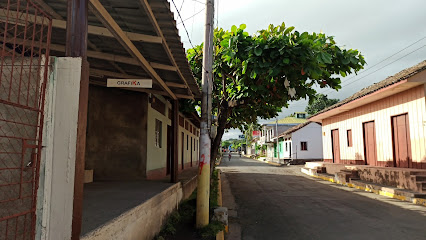
Comercial Arcia
Discover the vibrant culture of Nicaragua at Comercial Arcia, your go-to store for local crafts and authentic souvenirs in Moyogalpa.
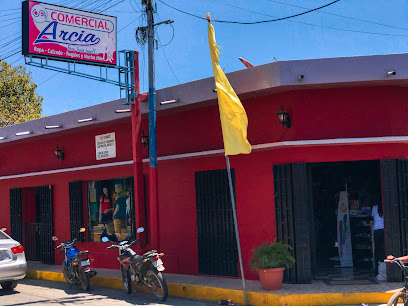
Libélula Café
Discover Libélula Café on Isla de Ometepe: where local coffee culture meets serene island vibes in a cozy setting.
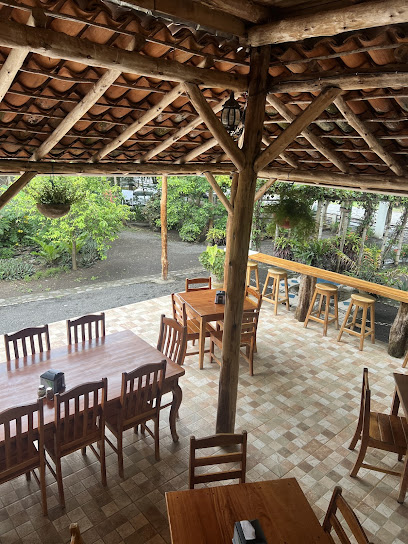
El Gallo más Gallo
Discover the best electronics on Ometepe at El Gallo más Gallo, where quality meets local charm amidst breathtaking island scenery.
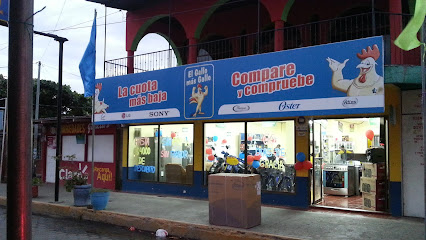
Tienda santa cruz
Explore Tienda Santa Cruz: your go-to local store for groceries and unique Nicaraguan snacks in Santa Cruz, Nicaragua.
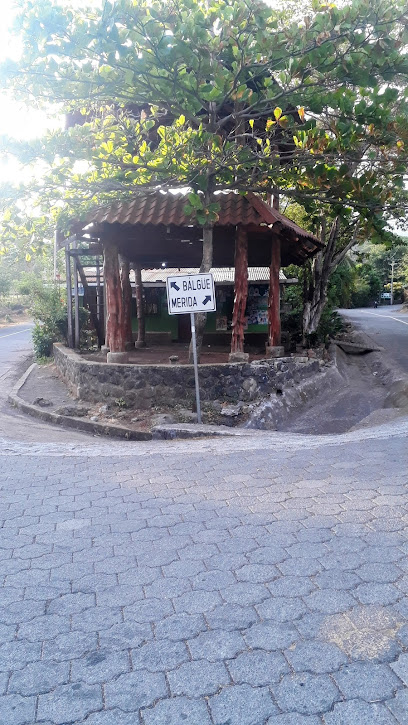
Essential bars & hidden hideouts
Café Campestre
Discover the flavors of Isla de Ometepe at Café Campestre, where local cuisine meets international delights in a picturesque setting.
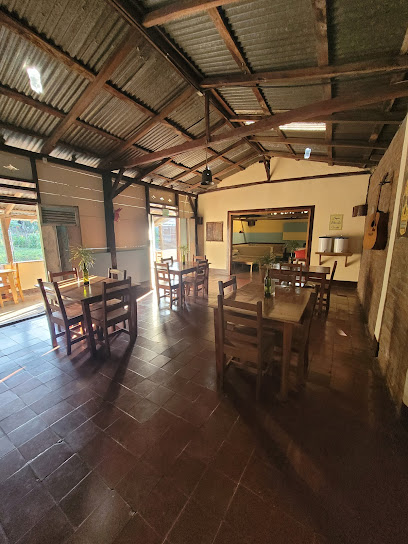
Pollo Cervecero bar y comedor
Discover the lively Pollo Cervecero Bar y Comedor in Moyogalpa, where delicious local cuisine meets a welcoming atmosphere for every traveler.
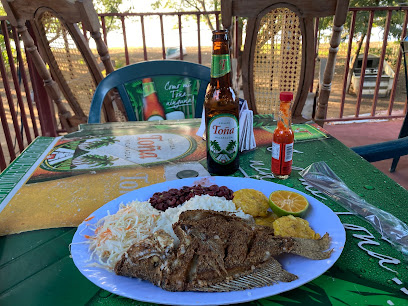
The Spicy Mango
Discover the vibrant flavors of Nicaragua at The Spicy Mango, a popular hostel and restaurant in San José del Sur, perfect for all travelers.

Cherry's Bar
Experience the vibrant nightlife at Cherry's Bar in Moyogalpa, where refreshing drinks and lively atmosphere await every traveler.
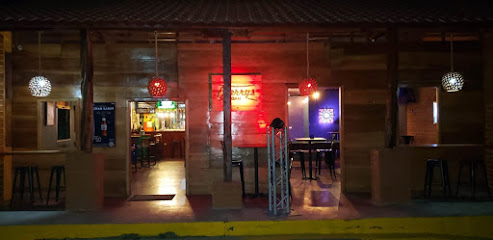
Exotic Island
Explore Exotic Island, a perfect blend of grill dining and hotel accommodations amidst the breathtaking landscapes of Ometepe, Santo Domingo.

Tiki Ometepe
Experience the vibrant essence of Isla de Ometepe at Tiki Ometepe, a tropical bar offering refreshing drinks and stunning lake views.
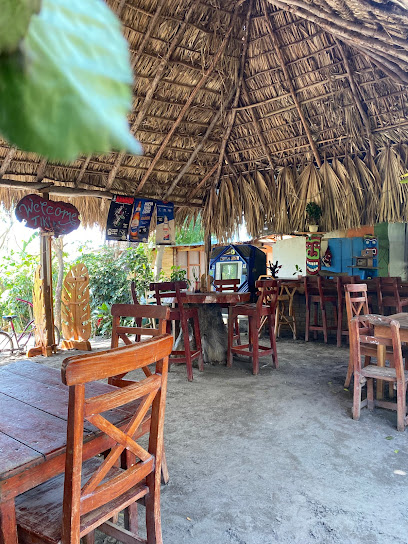
Bar Restaurante Linda Vista
Experience the flavors and beauty of Isla Ometepe at Bar Restaurante Linda Vista, where local cuisine meets breathtaking views in a cozy atmosphere.
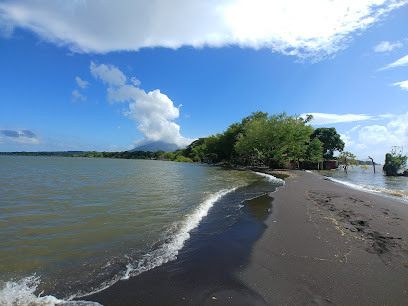
Copacabana Bar Lounge
Discover the vibrant atmosphere of Copacabana Bar Lounge, your perfect retreat by Lake Nicaragua, offering delightful drinks and local flavors.
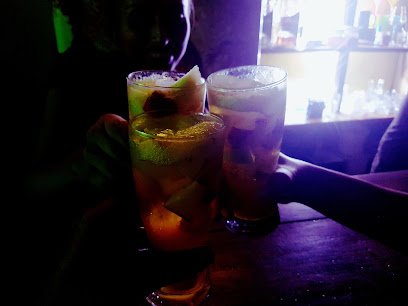
Kocha Bamba Tropikal
Experience the lively charm of Kocha Bamba Tropikal, a bar in Moyogalpa offering delicious drinks and a vibrant atmosphere amidst stunning island views.
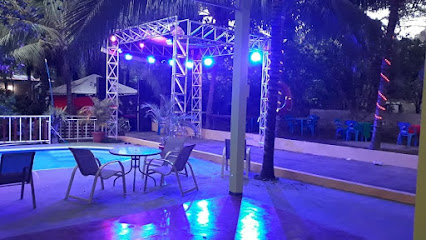
Bar Gaia -Billares Mayuyo
Experience the vibrant atmosphere of Bar Gaia - Billares Mayuyo, a top sports bar in Moyogalpa, perfect for enjoying billiards and live sports.
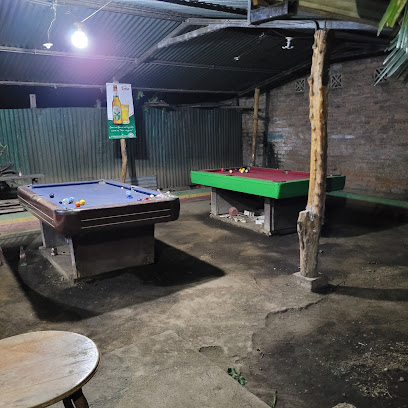
Ceibo
Discover the vibrant atmosphere and delightful flavors of Ceibo, Ometepe's top bar and restaurant offering local culinary experiences.

Bar lago azul
Experience the vibrant flavors of Nicaraguan cuisine at Bar Lago Azul, a charming grill in the heart of Moyogalpa offering delicious grilled dishes and stunning views.
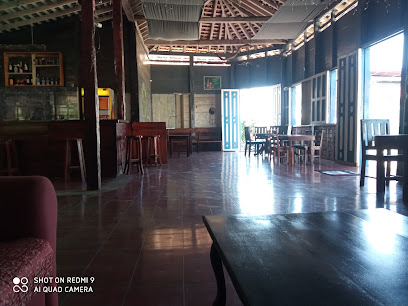
Rancho El Tigre
Experience the vibrant nightlife at Rancho El Tigre, a lively bar in La Muñeca offering refreshing drinks and local culture.

Sport Bar La Casona
Discover the vibrant nightlife and local culture at Sport Bar La Casona in San José del Sur, a perfect spot for relaxation and socializing.
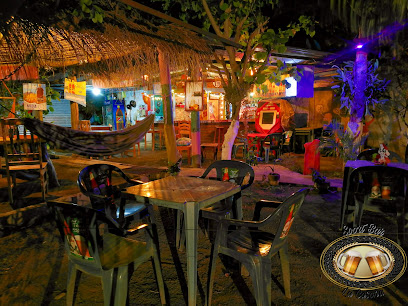
Bar y Restaurante Kalambu
Experience authentic Nicaraguan cuisine at Bar y Restaurante Kalambu in Mérida, Isla de Ometepe, where every meal is a taste of tradition.

Local Phrases
-
- HelloHola
[oh-lah] - GoodbyeAdiós
[ah-dee-ohs] - YesSí
[see] - NoNo
[noh] - Please/You're welcomePor favor/De nada
[por fah-vor/de nah-dah] - Thank youGracias
[grah-see-ahs] - Excuse me/SorryPerdón/Lo siento
[pair-dohn/loh see-ehn-toh] - How are you?¿Cómo estás?
[koh-moh ehs-tahs] - Fine. And you?Bien. ¿Y tú?
[bee-ehn. ee too] - Do you speak English?¿Hablas inglés?
[ah-blahs een-glehs] - I don't understandNo entiendo
[noh ehn-tee-ehn-doh]
- HelloHola
-
- I'd like to see the menu, pleaseMe gustaría ver el menú, por favor
[meh goo-stah-ree-ah vehr ehl meh-noo, por fah-vor] - I don't eat meatNo como carne
[noh koh-moh kahr-neh] - Cheers!¡Salud!
[sah-lood] - I would like to pay, pleaseMe gustaría pagar, por favor
[meh goo-stah-ree-ah pah-gahr, por fah-vor]
- I'd like to see the menu, pleaseMe gustaría ver el menú, por favor
-
- Help!¡Ayuda!
[ah-yoo-dah] - Go away!¡Vete!
[veh-teh] - Call the Police!¡Llama a la policía!
[yah-mah ah lah poh-lee-see-ah] - Call a doctor!¡Llama a un médico!
[yah-mah ah oon meh-dee-koh] - I'm lostEstoy perdido
[ehs-toy pair-dee-doh] - I'm illEstoy enfermo
[ehs-toy ehn-fehr-moh]
- Help!¡Ayuda!
-
- I'd like to buy...Me gustaría comprar...
[meh goo-stah-ree-ah kohm-prahr...] - I'm just lookingSolo estoy mirando
[soh-loh ehs-toy mee-rahn-doh] - How much is it?¿Cuánto cuesta?
[kwan-toh kwehs-tah] - That's too expensiveEsto es demasiado caro
[ehs-toh ehs deh-mah-see-ah-doh kah-roh] - Can you lower the price?¿Puedes bajar el precio?
[pweh-dehs bah-hahr ehl pree-syoh]
- I'd like to buy...Me gustaría comprar...
-
- What time is it?¿Qué hora es?
[keh oh-rah ehs] - It's one o'clockEs la una
[ehs lah oo-nah] - Half past (10)Media (10)
[meh-dee-ah (dheez)] - MorningMañana
[mah-nyah-nah] - AfternoonTarde
[tahr-deh] - EveningNoche
[noh-cheh] - YesterdayAyer
[ah-yehr] - TodayHoy
[oy] - TomorrowMañana
[mah-nyah-nah] - 1Uno
[oo-noh] - 2Dos
[dohs] - 3Tres
[trehs] - 4Cuatro
[kwah-troh] - 5Cinco
[seeng-koh] - 6Seis
[sehs] - 7Siete
[syeh-teh] - 8Ocho
[oh-choh] - 9Nueve
[nweh-veh] - 10Diez
[dyehs]
- What time is it?¿Qué hora es?
-
- Where's a/the...?¿Dónde está un/el...?
[dohn-deh ehs-tah oon/ehl] - What's the address?¿Cuál es la dirección?
[kwal ehs lah dee-rehk-syohn] - Can you show me (on the map)?¿Puedes mostrarme (en el mapa)?
[pweh-dehs mohs-trar-meh (ehn ehl mah-pah)] - When's the next (bus)?¿Cuándo es el próximo (autobús)?
[kwan-doh ehs ehl proh-ksee-moh (ow-toh-booos)] - A ticket (to ....)Un boleto (a ....)
[oon boh-leh-toh (ah)]
- Where's a/the...?¿Dónde está un/el...?
History of Ometepe
-
Ometepe Island is formed by two volcanoes, Concepción and Maderas, rising from Lake Nicaragua. The island’s name comes from the Nahuatl words 'ome' (two) and 'tepetl' (mountain), reflecting its unique geography. Volcanic activity over thousands of years led to the creation of this island, which now serves as a natural wonder and a vibrant ecosystem.
-
Long before the arrival of Europeans, Ometepe was inhabited by indigenous tribes, including the Chorotega and Nahua peoples. These early inhabitants left behind petroglyphs and stone idols, which still dot the landscape, particularly around the Maderas Volcano. These artifacts provide valuable insights into the island's ancient cultural and spiritual life.
-
The Spanish arrived in the 16th century, led by explorers such as Gil González Dávila. The indigenous populations were subjected to Spanish rule, which included forced labor and conversion to Christianity. The island became an important agricultural hub, producing crops like cocoa and bananas that were exported to the mainland.
-
During the 17th century, Ometepe faced numerous pirate raids. These pirates, often English or Dutch, attacked the island to plunder its resources and enslave its inhabitants. The constant threat of piracy led to the construction of defensive structures, some remnants of which can still be seen today.
-
In the late 19th and early 20th centuries, Ometepe experienced a coffee boom. The fertile volcanic soil proved ideal for coffee cultivation, and numerous plantations were established. Coffee became a major export commodity, significantly boosting the island’s economy and leading to increased interaction with international markets.
-
The Nicaraguan Revolution of the 1970s and 1980s had a profound impact on Ometepe. The island saw the rise of Sandinista influence, and many local inhabitants joined the revolutionary cause. The conflict led to social and economic upheaval, but also fostered a strong sense of community and resilience among the islanders.
-
Today, Ometepe is a popular destination for eco-tourism, attracting visitors with its stunning landscapes, rich history, and vibrant culture. The island remains largely agricultural, with its inhabitants continuing to cultivate traditional crops. Efforts are also being made to preserve the island’s natural and cultural heritage, ensuring that Ometepe remains a unique and treasured place for future generations.
Ometepe Essentials
-
Ometepe is located in Lake Nicaragua and can be accessed primarily by ferry. The nearest major city is Rivas, from which you can take a ferry from San Jorge port to Moyogalpa or San José del Sur on Ometepe. The ferry ride typically takes around an hour. Alternatively, you can take a small charter flight from Managua to Ometepe’s small airport, although this option is less common.
-
Within Ometepe, transportation options include taxis, rental cars, scooters, and bicycles. Taxis can be hired for specific trips or for the entire day. Renting a scooter or bicycle is a popular way to explore the island at your own pace. Public buses also operate between the main towns but can be infrequent. Make sure to check schedules ahead of time.
-
The official currency in Nicaragua is the Nicaraguan Córdoba (NIO). Some businesses on Ometepe also accept US dollars, but it is advisable to carry local currency for smaller establishments. Credit cards are accepted in larger hotels and restaurants, but not all places have card facilities. ATMs are available in Moyogalpa and Altagracia, so it’s wise to withdraw sufficient cash upon arrival.
-
Ometepe is generally considered safe for tourists, but it’s important to take common precautions. Avoid walking alone at night in secluded areas and keep your belongings secure. It is advisable to stay in well-lit and populated areas. Be cautious around isolated beaches and trails. Although crime rates are low, petty theft can occur.
-
In case of emergency, dial 118 for police assistance. For medical emergencies, dial 128. The main medical facilities are located in Moyogalpa and Altagracia. It is highly recommended to have travel insurance that covers medical emergencies. Pharmacies are available in the main towns where you can purchase over-the-counter medications.
-
Fashion: Do dress modestly, especially when visiting local communities and religious sites. Avoid wearing overly revealing clothing. Religion: Do respect local customs and traditions. Dress appropriately when visiting churches and other sacred places. Public Transport: Do be respectful and considerate to fellow passengers. Don’t eat or drink on public transport. Greetings: Do greet people with a friendly ‘Hola’ or ‘Buenos días’. A handshake is common in formal settings. Eating & Drinking: Do try local dishes and accept food offerings graciously. Don’t refuse hospitality, as it may be considered impolite.
-
To experience Ometepe like a local, visit the island’s markets where you can purchase fresh produce and handmade crafts. Engage with locals, who are often friendly and willing to share stories about the island’s history and culture. Don’t miss climbing the two volcanoes, Concepción and Maderas, for stunning views. Also, explore the natural springs at Ojo de Agua and the petroglyphs in the Charco Verde Nature Reserve.
Trending Landmark in Ometepe
-
Mirador de Catarina
-
Reserva Natural Ojo de Agua
-
Cristo de La Misericordia
-
Reserva Natural Volcán Mombacho
-
Granada Malecon
-
Xalteva Park
-
Mirador Calvary
-
Playa Mangos kayaks & restaurant
-
Immaculate Conception of Mary Cathedral Church
-
El Zopilote Permaculture Farm / Hostel / Restaurant / Pizzeria
-
Hospedaje Soma
-
El Coyotepe Fortress
-
Chapel Maria Auxiladora
-
Xalli, Ometepe Beach Hotel
-
Cascada de San Ramón
Nearby Cities to Ometepe
-
Things To Do in Rivas
-
Things To Do in San Juan del Sur
-
Things To Do in Granada
-
Things To Do in Masaya
-
Things To Do in Managua
-
Things To Do in Liberia
-
Things To Do in Playa Flamingo
-
Things To Do in Guanacaste
-
Things To Do in Tamarindo
-
Things To Do in La Fortuna
-
Things To Do in Monteverde
-
Things To Do in Jinotega
-
Things To Do in Jaco
-
Things To Do in San Jose
-
Things To Do in Manuel Antonio


